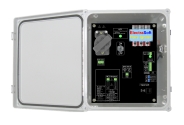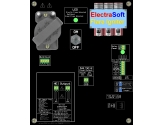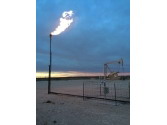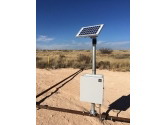|
|
Flare Igniter Usageo Oil and Gas exploration and production industry for flaring off unusable gases including natural gas mix with contaminants. o Portable flare stacks: Dependable igniter system for portable flare stack ignition systems, that can stand up to continuous moving from place to place, and being set up in diverse situations. o Farming: Farm manure cover and flare off systems to reduce odors and methane gas flare stacks are used in cattle stockyards, dairy farms and other farm livestock industries. Smart Multi Function Flare IgnitersStandard Flare IgniterFlame Detection You have the option of using the spark electrode, a flame rod, or thermocouple to monitor and turn the spark on and off. Flame detection via ionization using the spark electrode or a flame rod, where the spark electrode, or a flame rod is immersed in the flame in order to exploit the ionizing effect of the flame. In addition to ionization flame monitoring, you have the option of using thermocouple flame detection instead of or in conjunction with ionization by moving a jumper. These option can also be used to alert you if the flame is present or not.HEI-CDI Flare IgniterIn the HEI-CDI Flare Igniters, Flame monitoring for the purpose of turning the sparking off when the flame is present is achieved by connecting a thermocouple to the unit. These option can also be used to alert you if the flame is present or not. Flame Detection You have the option of using a flame rod, or thermocouple to monitor and turn the spark on and off. Flame detection via ionization using a flame rod, where a flame rod is immersed in the flame in order to exploit the ionizing effect of the flame. In addition to ionization flame monitoring, you have the option of using thermocouple flame detection instead of or in conjunction with ionization by moving a jumper. These option can also be used to alert you if the flame is present or not.Monitoring the Flame Here is how we can preform so many functions using only one ignition wire. First off, the sparks only take up a small fraction of the overall time of a sparking cycle. The rest of the time is being used to send inquires to the plug and receive important status data in return. We use the data to make decisions on how to best achieve ignition.Deliver Sparks to Your Spark Plug This is easy as long as the system is in good repair.Check for and Remove Water from the Plug If water splashes on the plug, normally that means a miss-fire. We overcome this problem by sending and receiving information about the plug. If we sense a wet plug, we send a high current across the spark-gap and boil the water away.Check for and Burn Away Debris If debris forms or falls on the plug, normally that means a miss-fire. We overcome this problem by sending and receiving information about the plug. If we sense debris in the spark gap, we send a high current voltage across the spark-gap to burn it away.Placing the Spark in the Best Place About 1/1000000th of a second before sending the ignitor spark, we send a quarry asking for data on the gas mixture. If the returned data says that the mixture is too rich at the moment, we monitor the returning data until an ignitable mixture is present before sending the HEI-CDI igniting spark-train. Because the mixture is moving in a constant state of flux, the mixture moving even 100th of an inch can make the difference of igniting or not. If after a reasonable time interval we can not get a good mixture report, we send an extra high HEI-CDI voltage at maximum current.Increase Spark Voltage if Necessary If you have a need for higher than normal voltage and or current, you can use the HEI-CDI Train Intensity adjustment to increase the ignition output.HEI-CDI Plasma Flare IgnitionWhy Plasma Ignition We use HEI-CDI produced plasma to improve flare ignition spark plug performance. Plasma ignition will ignite a flare where other systems fail.Creating Plasma using HEI-CDI We take into consideration the four states of matter: 1.solids, 2.liquids, 3.gases, 4.plasma. To form the plasma, we subject the gases in the gas-air mixture atoms to high electrical energy that ionize them into plasma. This process breaks atoms apart to form a collection of positively and negatively charged highly reactive particles. Plasma consists of positively charged ions with their detached electrons moving freely about in a very active manner reacting with other atoms.The Power of Plasma The plasma is produced at the location where the flame is about to ignite and then acts as a catalyst to accelerate combustion of the flare igniter. Because plasma is extremely reactive, it ignites immediately and burns quickly. The remaining gaseous gas-air mixture is instantly ignited by the large cloud of burning plasma affected fuel.HEI-CDI Plasma HEI (High Energy Ignition) combined with CDI (Capacitor Discharge Ignition) is an important element in our achieving the power of plasma.How Our HEI-CDI Works Our HEI-CDI generator uses an integrated capacitor to accumulate, store, and compress electrical energy. We then communicate with the spark gap via the ignition wire. When returning data indicates that a spark is forming, we release a measured amount of electrical energy that we have stored in the capacitor in a quick and powerful brief pulse equal to about 4,000,000 watts for approximately 3/10,000,000ths of a second. This high energy discharge pulse is intense enough to convert the gas-air mixture into highly excited plasma.HEI-CDI Train Intensity The 4,000,000 watt pulse(s) are sent in the form of a train with about 1/100th seconds between each pulse. The HEI-CDI Train Intensity is an adjustable option and can be set to one or more of these pulse(s) per train.High Intensity Plasma Pulse BenefitsHEI-CDI Instant Ignition The HEI-CDI pulse creates a flash of heat creating the plasma that gives the gas-air mixture a head start to achieving the temperature required to ignite. In addition, this pulse ionizes the gaseous gas-air mixture, breaking down air components like H² and O² into their atomic state Hydrogen and Oxygen where they are most volatile. These highly excited elements react to the spark by igniting instantly. The result is a cleaner burn.HEI-CDI Quicker Burn The high-intensity pulse breaks apart the long hydrocarbon chains found in gas-air mixture into shorter chains that react quickly. This rapid burn keeps the spark gap cleaner.HEI-CDI Cleaner Burn The portion of the fuel that contains shortened hydrocarbon chains burns faster, and creates a larger surface area to ignite the rest of the gaseous gas-air mixture. This allows the gas-air mixture to burn more completely ensuring a cleaner spark gap.Fireball Shot Tube Flare Stack Pilot IgnitionWhy Use a Shot-Tube Flare Stack Pilot Igniter The benefit of using an ElectraSoft Fireball Shot-Tube Flare Igniter, is that you do not need to have spark plugs, ignition wires, insulators, etc, up near the searing heat of the flare stack bonnet.Building a Shot-Tube Flare Stack Igniter You start anywhere from one to six foot from ground level, where you run a tube or pipe up to the flare stack bonnet. This tube or pipe is call a shot-tube. The size of the pipe will be determined based on variables including the height of the Flare Stack. The shot-tube has a venturi with a gas orifice at the bottom. Part way up near the bottom there is a spark plug. The Flare Stack Igniter Control System is connected to this spark plug via an ignition wire. When the shot-tube is filled with gas-air mixture from the venturi, a spark is introduced, igniting the gas in the shot-tube, resulting in a fireball that travels to the top and ignites any fuel it encounters.May Need a Flare Stack Pilot The Shot-Tube Flare Stack Igniter may be able to ignite the Flare Stack directly if the flare gas is constant and of high quality gas. Lighting the Flare Stack directly is not alway practical for a variety of reason. If the gas to be ignited varies in pressure or is present only periodically. Or the flare-gas may be a mix of gases that make it difficult to ignite. These are good reasons to consider using a Flare Stack Pilot Ignition Control System.Adding a Flare Stack Pilot To make the Shot-Tube Fireball Flare Stack Igniter into a Shot-Tube Fireball Flare Stack Pilot Igniter you will need to add another pipe along side the shot-tube pipe, connecting to a small pilot burner. This pilot pipe will, like the shot-tube, have a venturi with a gas orifice at the bottom. When the shot-tube sends a fireball to the top, it ignites the pilot burner. Now when the gases of varying quantity and quality are present, they will have this stable and dependable flame to ignite them.Shot-Tube Fireball Flare Stack Pilot IgniterElectraSoft Shot-Tube Fireball Flare Stack Pilot Igniter The ElectraSoft Flare Igniter waits for the shot-tube to fill with gas-air mixture. When the shot-tube is full, it ignites the fuel, sending a fireball to the pilot or flare. Then it listens for feedback from your choice of electrode ionization, flame-rod ionization, thermocouple, or any combination of the three. If the feedback verifies a flame, the unit's LED turns from blue to green, sends a flame-on signal to the Alarm Terminal Connector and to the Flame Data Logger, and shuts off further sparks as long as there is a flame detected. Every time the Flare Igniter sparks, the LED flashes from blue to red for a short time.Why Flame Detection The Ignition Control System receives continues feedback, telling it many things, including letting it know that the flare or pilot is lite. Knowing whether or not there is a flame is important so it can stop sparking when a flame is present. When using a shot-tube with a pilot, another fireball may blow the pilot flame out. Another reason for shutting down the spark after a flame is detected is to save on the unit's circuitry, battery, and the spark plug gap ignition electrode.Flare Ignition Equipment for Every NeedProduction and Exploration We have oil and gas field industry flare ignition system for production, exploration, skid-mounted flare, well site flares, tank vent flares, portable, trailer, etc. We have flare igniters for all your needs. If you need us to, we will custom build you a flare igniter.Trailer Flaring Systems We can supply you with a trailer flare ignition systems that uses a dual power source. We have systems that have a combination solar and 12VDC or what ever else your prefer. This is handy if you need the trailer flare for a quick blow-down and do not want to setup a solar panel. Just connect a wire from your 12V battery to the unit, or don't bother to connect any power source but instead just turn it on and it will run up to 10 days using the built-in Li-ion solar rechargeable batteries. Then if later you want to set the flare up semi-permanent, connect your solar panel and leave it.New and Existing Ignition Control SystemsWith our low priced high efficiency solar powered ignition systems you will not need to supply electricity to the flaring sight. Tell us what you need and we will create it for you. High Performance yet Low Power ConsumptionThese ignition control systems can be used with any gas flare or gas fired equipment including low flow production gas flares. The basic unit comes complete with Solar Panel ready Li-ion Lithium Ion Battery Pack. You can buy the basic unit or add any of the following options:
o Flame detection via ionization from the igniter electrode. Let Us Build You a Custom Flare Ignition SystemChoose the power source that you have available:
o Solar Panel, 12VDC, 5 Watt or higher. Send me a message, and I will call or email you back. With our low priced high efficiency solar powered flare stack ignition systems you will not need to supply electricity to the flaring sight. Tell us what you need and we will create it for you. We supply the spark module control box that you can connect to your igniter system. These ignition control systems can be used with any gas flare or gas fired equipment including low flow production gas flares. You buy the basic unit and we add any of the following options:
o Fixed Smart Intelligence (highly recommended) or Embedded Computerized.
o We can add an external switch in addition to the 2 internal switches. On units with flame detection: When the unit is in ignite mode the LED is blue and the [alarm logic terminal] goes high (TRUE). When a flame is detected the LED indicator goes green and the [alarm logic terminal] goes low (FALSE). On the basic unit, this LED indicator is normally inside of the control box. If you need the LED on the outside of the control box, let us know: o We can put the LED indicator on the outside of the control box. Basic Units FabricationType 4X Units FabricationThese Ignition Control Systems are designed and built by Jon Krahmer at ElectraSoft near Houston TX. Who Uses ElectraSoft ProductsElectraSoft products are used by many well known establishments including military, government, education, medical, business, and individuals. Some users of ElectraSoft products include, United States Armed Forces, United States Senate, University of Utah, Central Iowa Health Care System, San Diego Health Department, IBM, and millions of small businesses and individuals.
ElectraSoft Home Page: www.ElectraSoft.com |







